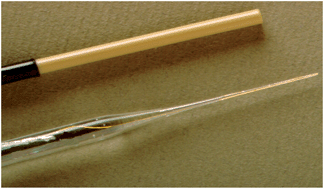Using in situ voltammetry as a tool to identify and characterize habitats of iron-oxidizing bacteria: from fresh water wetlands to hydrothermal vent sites
Abstract
Iron-oxidizing bacteria (FeOB) likely play a large role in the biogeochemistry of iron, making the detection and understanding of the biogeochemical processes FeOB are involved in of critical importance. By deploying our in situ voltammetry system, we are able to measure a variety of redox species, specifically Fe(II) and O2, simultaneously. This technique provides significant advantages in both characterizing the environments in which microaerophilic FeOB are found, and finding diverse conditions in which FeOB could potentially thrive. Described here are four environments with different salinities [one fresh groundwater seep site, one beach-groundwater mixing site, one hydrothermal vent site (Mid-Atlantic Ridge), and one estuary (Chesapeake Bay)] where in situ voltammetry was deployed, and where the presence of FeOB were confirmed by either culturing methods or molecular data. The sites varied in both O2 and Fe(II) content with O2 ranging from below the 3 μM detection limit of the electrodes at the Chesapeake Bay suboxic zone, to as high 150 μM O2 at the vent site. In addition, a range of Fe(II) concentrations supported FeOB communities, from 3 μM Fe(II) in the Chesapeake Bay to 300 μM in the beach aquifer. In situ electrochemistry provides the means to quickly measure these redox gradients at appropriate resolution, making it possible in real time to detect niches likely inhabited by microaerophilic FeOB, then accurately sample for proof of FeOB presence and activity. This study demonstrates the utility of this approach while also greatly expanding our knowledge of FeOB habitats.

- This article is part of the themed collection: Geoscience (ESPI)

 Please wait while we load your content...
Please wait while we load your content...